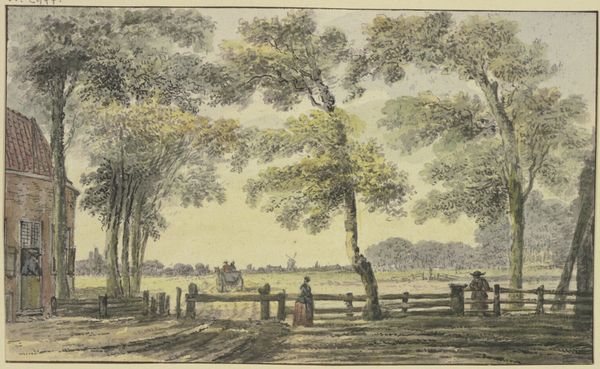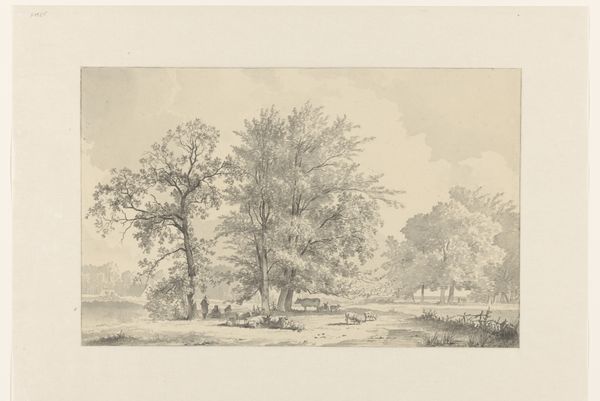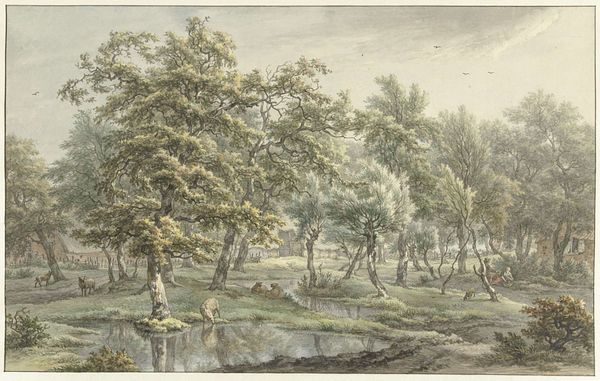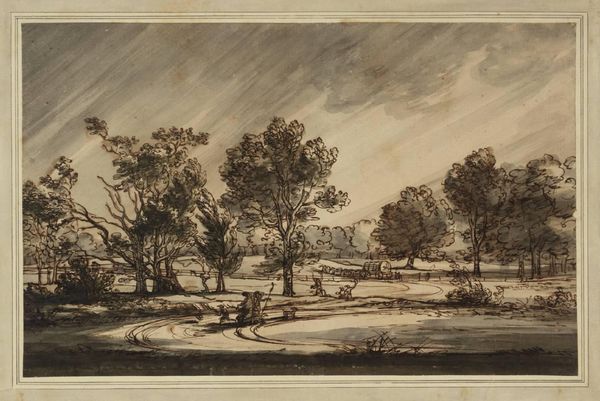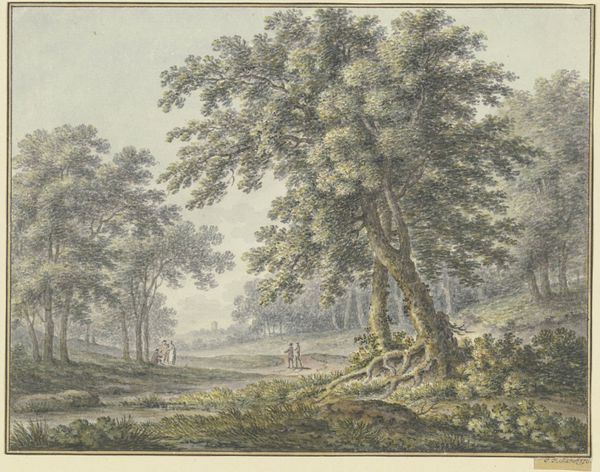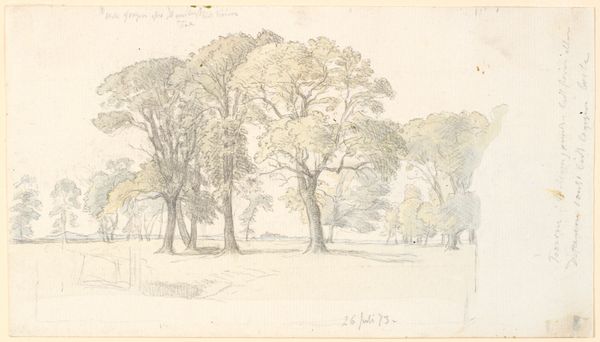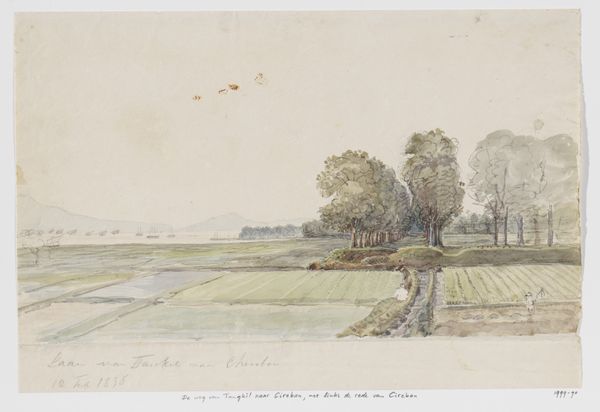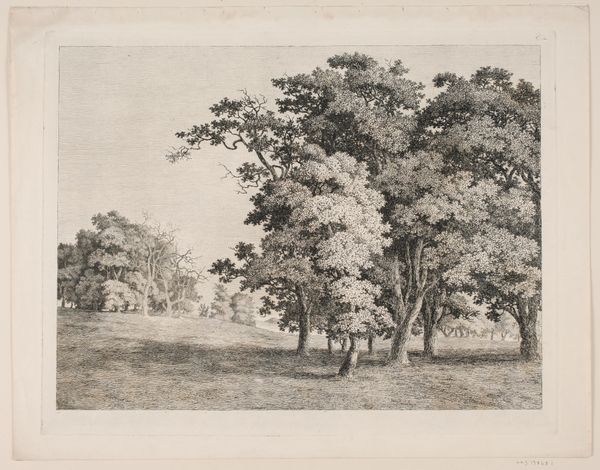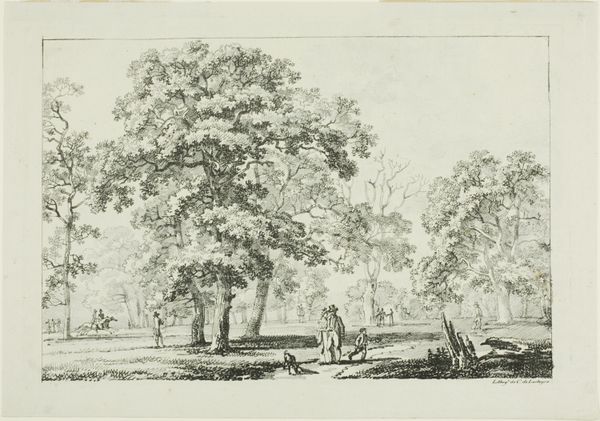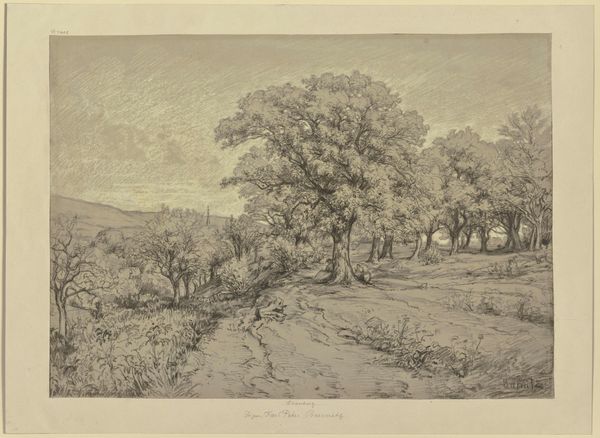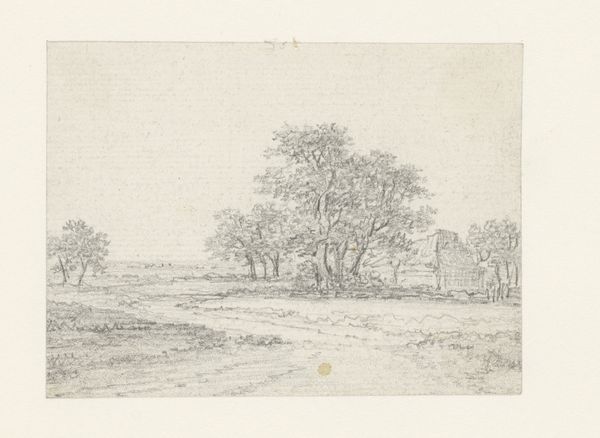
drawing, paper, pencil
#
drawing
#
landscape
#
paper
#
pencil
#
15_18th-century
Copyright: Public Domain
Editor: Here we have Hendrik Spilman’s pencil drawing, "Haus mit Wagen unter Bäumen, links Wiese mit Vieh und einem Dorf," rendered on paper sometime in the 18th century. It's a lovely scene—so peaceful, rural, and orderly, despite the vastness of the landscape. What catches your eye about it? Curator: Well, what's interesting to me is how this seemingly idyllic landscape plays into the burgeoning ideals of land ownership and control during that period. The drawing presents a vision of a harmonious relationship between people and the land, but it subtly reinforces a power structure. Editor: How so? Curator: Notice how the composition directs our gaze? The house and the village in the background signify settlement and cultivation. Landscape art became increasingly popular among the burgeoning middle class as a way to signify both social standing and a national identity linked to the land. Consider where such art was displayed, too. Editor: You mean in domestic settings, rather than, say, public spaces or religious institutions. Curator: Exactly. This drawing, intended for private consumption, helps shape the perception of the Dutch landscape as a tamed and productive entity, thus mirroring the socio-economic transformations of the time. It suggests an order, perhaps obscuring the realities of land usage at the time. What are your thoughts? Editor: That’s a compelling point. I hadn't considered the implications of "ownership" within such a serene depiction. It does make me rethink how seemingly simple landscape paintings can hold a more complex cultural significance. Curator: Precisely. Analyzing art through a historical lens can reveal the powerful ideologies embedded within seemingly innocuous scenes. Editor: Thank you for highlighting that for me; I learned so much about this piece today!
Comments
No comments
Be the first to comment and join the conversation on the ultimate creative platform.
